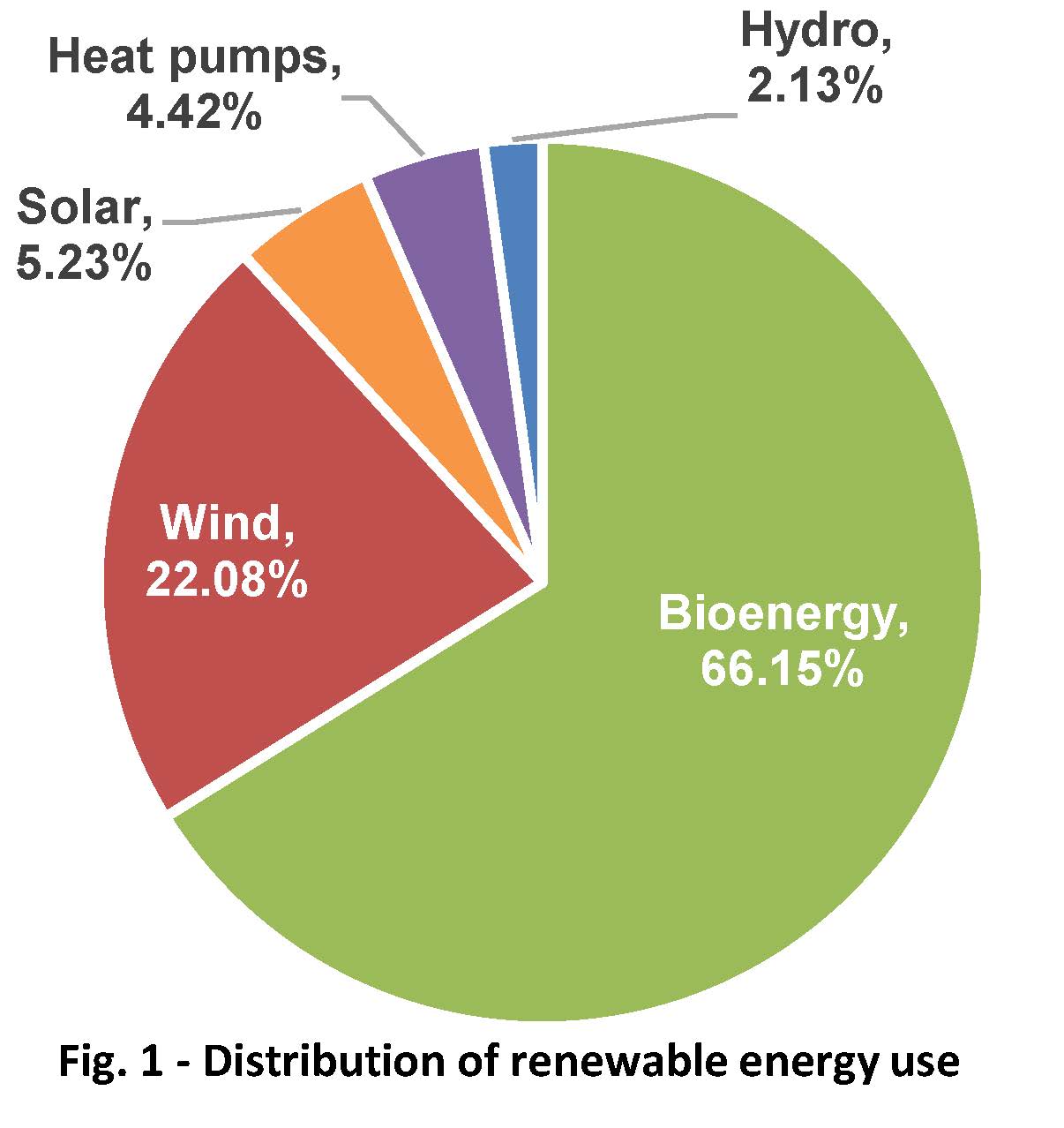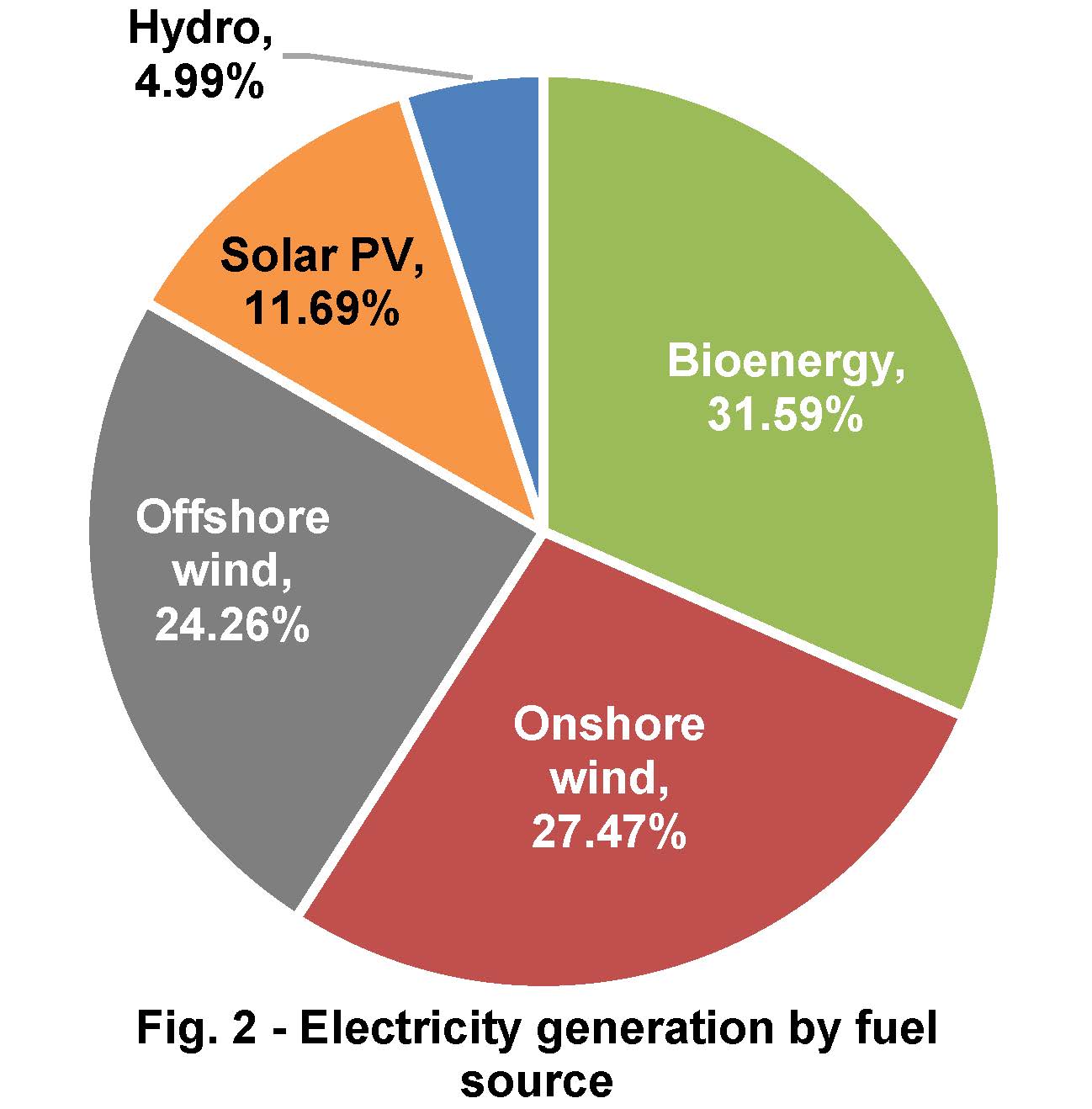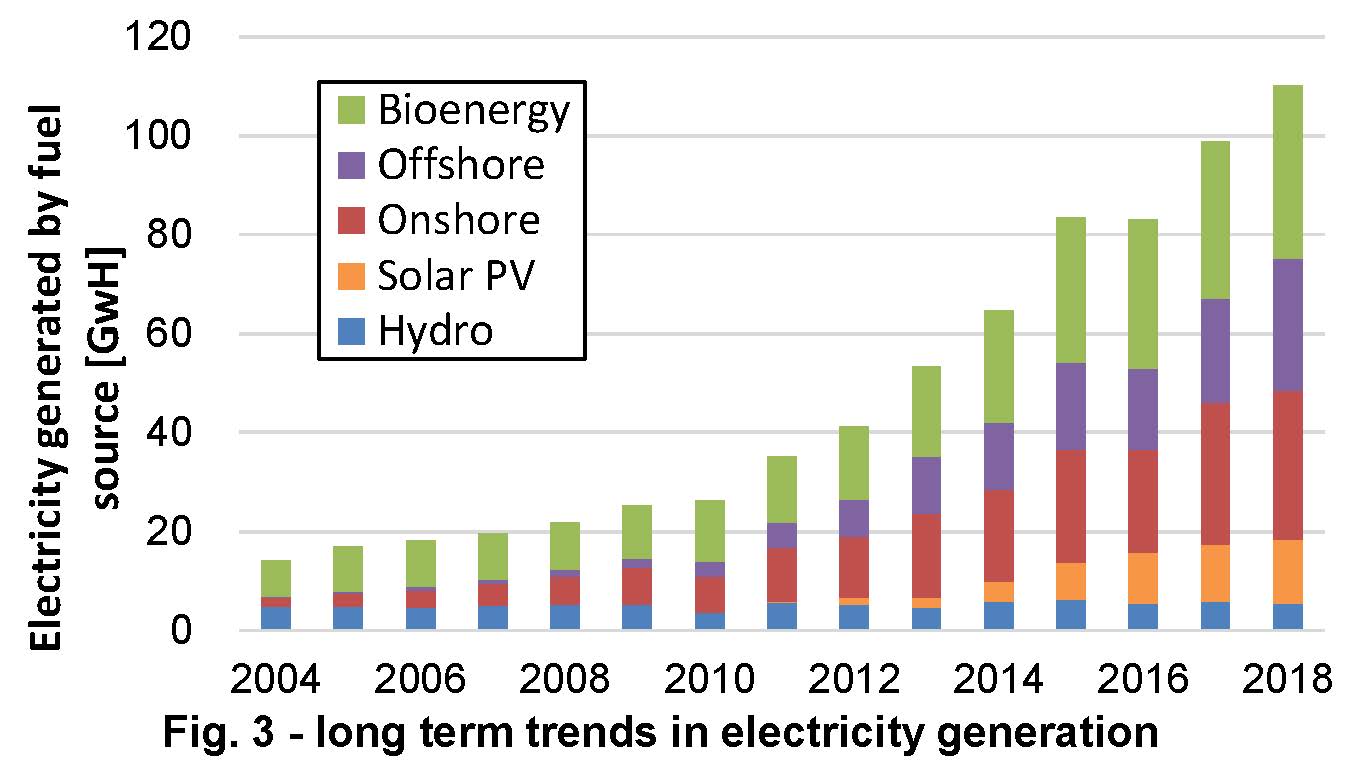30/08/2019
The government have recently published their Digest Of United Kingdom Energy Statistics 2019. This digest provides an extensive summary of the current state of the production and consumption of individual fuels and of energy as a whole in UK. It includes information relating to individual energy sources such as petrol and natural gas, and more importantly renewable energy sources, such as wind, solar, hydro, bioenergy, etc. This blog is an update to the blog I wrote in June (linked here) in which I discussed European renewable energy used estimates from EUROSTAT. After publication of this digest, we now have a clearer picture of the UK’s energy status.
 Demand for renewable energy has increased year by year. In 2018 we saw the total demand increase by 12%. This growth is particularly due to the increased demand in bioenergy such as plant mass for electricity generation. Since bioenergy sources can be transported, the UK imports much of its biomass for energy generation. Therefore the distribution of renewable fuel use in the UK sees a majority coming from Bioenergy.
Demand for renewable energy has increased year by year. In 2018 we saw the total demand increase by 12%. This growth is particularly due to the increased demand in bioenergy such as plant mass for electricity generation. Since bioenergy sources can be transported, the UK imports much of its biomass for energy generation. Therefore the distribution of renewable fuel use in the UK sees a majority coming from Bioenergy.
Figure 1 shows the distribution of renewable energy use in 2018. Total renewable energy use for 2018 was approximately 22.2 million tonnes of oil equivalent (mtoe).
In terms of electricity generation, 2018 saw a 11% increase from renewable energy sources, up from 99 TWh in 2017 to 110 TWh. 65% of this increase was due to wind generation, in particular offshore wind generation. Renewable sources also provided around a record third (33%) of the electricity generated in the UK in 2018, up from 29.2% in 2017. Figure 2 shows the share of electricity generation from renewable fuel sources. Whilst biofuel is the most widely used fuel source (see fig. 1), it is more commonly used for heat generation so other fuel sources provide larger contributions to the output of electricity. Figure 3 shows the long term trends in electricity generation from 2000.


Figure 3 portrays a very similar picture to the data estimated from EUROSTAT in my previous blog, linked above. This is a reassuring sign that the energy sector in UK is moving in the direction of renewable sources. An increase in renewable energy use is a reliable indicator that renewable solutions for generating energy are becoming more commonplace. Such data is also indicative of better investment in technologies that provide cheaper energy from renewable sources. This increased demand also encourages increased innovation in renewable energy technologies.
Technologies related to renewable energies are prime candidates for patent protection. As investment increases in the renewable sector and new technologies are continually being conceived now is an extremely important time to protect those technologies. In a blog published last year (linked here), I discussed possibilities available in many jurisdictions for expediting patent prosecution of applications for green technologies. The UK’s green channel is a good example of patent systems that encourage innovation in green and renewable technologies.
This article is for general information only. Its content is not a statement of the law on any subject and does not constitute advice. Please contact Reddie & Grose LLP for advice before taking any action in reliance on it.

